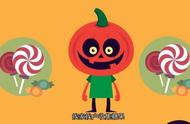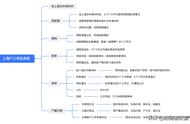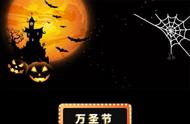
Halloween is a celebration observed in several countries on the 31st of October.
万圣节是10月31日在多个国家庆祝的活动。
It begins the three day observance of Allhallowtide, the time in the liturgical year dedicated to remembering the dead, including the Saints (hallows), Martyrs, and all the faithful departed.
它开始了为期三天的Allhallowtide纪念活动,这是礼仪年致力于纪念死者的时间,包括圣徒(圣器),殉道者和所有离开的信徒。
Welcome to our Animated History Channel.
欢迎来到我们的动画历史频道。
This show presents Halloween History.
这个节目展示了万圣节的历史。
The word Halloween or Hallowe'en dates to about 1745 and is of Christian origin.
万圣节或万圣节这个词可以追溯到大约1745年,起源于基督教。
The word Hallowe'en means Saints' evening.
万圣节这个词的意思是圣徒的夜晚。
It comes from a Scottish term for All Hallows' Eve, the evening before All Hallows' Day.
它来自苏格兰对万圣节前夕的称呼,即万圣节前一天晚上。
Halloween traditions may have originated from ancient Celtic harvest festivals, particularly the Gaelic festival Samhain.
万圣节传统可能起源于古老的凯尔特人丰收节,特别是盖尔节Samhain。
The Celtic Festival of Samhain comes from the old Irish for summer's end.
Samhain的凯尔特节来自古老的爱尔兰人,夏季结束。
Samhain was the first and most important of the four quarter days in the medieval Gaelic calendar and was celebrated on the 31st of October to the 1st of November in Ireland.
Samhain是中世纪盖尔历中四分之一天中的第一天,也是最重要的一天,在爱尔兰于10月31日至11月1日庆祝。
It marked the end of the harvest season and beginning of winter, or the darker half of the year.
它标志着收获季节的结束和冬季的开始,或者一年中较暗的半部分。
Throughout Ireland and Britain, the household festivities included rituals and games intended to foretell one's future, especially regarding death and marriage.
在整个爱尔兰和英国,家庭庆祝活动包括旨在预测一个人未来的仪式和游戏,特别是关于死亡和婚姻。
Apples and nuts were often used in these divination rituals.
苹果和坚果经常用于这些占卜仪式。
From at least the 16th century, the festival included mumming and guising in Ireland, Scotland, the Isle of Man and Wales.
至少从16世纪开始,这个节日包括爱尔兰,苏格兰,马恩岛和威尔士的木乃伊和伪装。
This involved people going house to house in costume (or in disguise), usually reciting verses or songs in exchange for food.
这涉及人们穿着戏服(或伪装)挨家挨户地走访,通常背诵诗句或歌曲以换取食物。
In parts of Southern Ireland, the guisers included a hobby horse.
在南爱尔兰的部分地区,伪装者包括一匹爱好马。
A man dressed as a Láir Bhán (white mare) led youths house-to-house reciting verses, some of which had pagan overtones in exchange for food.
一个打扮成Láir Bhán(白母马)的男人带领年轻人挨家挨户地背诵经文,其中一些带有异教徒的色彩以换取食物。
In Scotland, youths went house to house with masked, painted or blackened faces, often threatening to do mischief if they were not welcomed.
在蘇格蘭,年輕人挨家挨戶地戴著蒙面、彩绘或被熏黑的臉,經常威脅說,如果他們不被歡迎,就會做惡作劇。
Today's Halloween costumes are thought to have been influenced by Christian dogma, and practices derived from it.
今天的万圣节服装被认为受到基督教教条的影响,以及由此产生的实践。
Halloween is the evening before the Christian holy days of All Hallows' Day on the 1st of November, and All Souls' Day on the 2nd of November, thus giving the holiday on October 31st the full name of All Hallows' Eve.
万圣节是基督教圣日前一天晚上的万圣节,11月2日的万灵节,因此10月31日的节日是万圣节前夜的全名。
These three days are collectively called Allhallowtide, and are a time for honoring the Saints and praying for the recently departed souls who have yet to reach Heaven.
这三天统称为Allhallowtide,是纪念圣徒和为最近离开的尚未到达天堂的灵魂祈祷的时间。
Commemorations of All Saints and Martyrs were held by several churches on various dates, mostly in springtime.
几个教堂在不同的日期举行所有圣徒和殉道者的纪念活动,主要是在春天。
By the end of the 12th century, they had become holy days of obligation across Europe and involved such traditions as ringing church bells for the souls in purgatory.
到12世纪末,它们已成为整个欧洲义务的圣日,并涉及诸如为炼狱中的灵魂敲响教堂钟声等传统。
It was not until mass Irish and Scottish immigration in the 19th century that Halloween became a major holiday in North America, confined to the immigrant communities during the mid-19th century.
直到19世纪爱尔兰和苏格兰的大规模移民,万圣节才成为北美的主要节日,仅限于19世纪中叶的移民社区。
It was gradually assimilated into mainstream society and by the first decade of the 20th century, it was being celebrated coast to coast by people of all social, racial and religious backgrounds.
它逐渐被主流社会同化,到20世纪的第一个十年,所有社会,种族和宗教背景的人都从东海岸到西海岸庆祝它。
Jack-o'-lanterns are traditionally carried by guisers on All Hallows' Eve in order to frighten evil spirits.
传统上,杰克灯笼在万圣节前夕由伪装者携带,以吓唬恶灵。
In Ireland and Scotland, the turnip has traditionally been carved during Halloween, but immigrants to North America used the native pumpkin, which is both much softer and much larger, making it easier to carve than a turnip.
在爱尔兰和苏格兰,萝卜传统上是在万圣节期间雕刻的,但北美移民使用本地南瓜,南瓜更柔软,更大,比萝卜更容易雕刻。
The American tradition of carving pumpkins is recorded in 1837, and was originally associated with harvest time in general, not becoming specifically associated with Halloween until the mid-to-late 19th century.
美国雕刻南瓜的传统记录于1837年,最初与一般的收获时间有关,直到19世纪中后期才与万圣节特别相关。
Trick-or-treating is a customary celebration for children on Halloween.
捣蛋是孩子们在万圣节的习惯性庆祝活动。
Children go in costume from house to house, asking for treats such as candy or sometimes money with the question "Trick or treat?"The word "trick" implies a threat to perform mischief on the homeowners or their property if no treat is given.
孩子们穿着戏服挨家挨户地走来走去,要求糖果等零食,有时还会问钱,问的问题是"捣蛋还是零食?"伎俩"一词意味着,如果不给予任何款待,就威胁要对房主或其财产进行恶作剧。
In England, from the medieval period up until the 1930s, people practiced the Christian custom of souling on Halloween, which involved groups of soulers, going from parish to parish, begging the rich for some cakes in exchange for praying for the souls of the givers and their friends.
在英格兰,从中世纪时期到20世纪30年代,人们实行基督教的万圣节灵魂习俗,其中包括一群灵魂主义者,从一个教区到另一个教区,乞求富人一些蛋糕,以换取为给予者的灵魂和他们的朋友祈祷。
In Scotland and Ireland, guising - children disguised in costume, going from door to door for food or coins.
在苏格兰和爱尔兰,伪装 - 孩子们伪装成服装,挨家挨户寻找食物或硬币。
Halloween costumes are traditionally modeled after supernatural figures such as vampires, monsters, ghosts, skeletons, witches and devils.
万圣节服装传统上以吸血鬼,怪物,鬼魂,骷髅,女巫和魔鬼等超自然人物为蓝本。
Dressing up in costumes and going guising was prevalent in Scotland and Ireland at Halloween by the late 19th century.
到19世纪末,在苏格兰和爱尔兰的万圣节,穿着戏服和伪装是很普遍的。
There are several games traditionally associated with Halloween, such as apple bobbing and face the cookie.
传统上有几种与万圣节相关的游戏,例如苹果摇摆和面对饼干。
Haunted attractions are entertainment venues designed to thrill and scare patrons.
闹鬼的景点是旨在刺激和吓唬顾客的娱乐场所。
Most attractions are seasonal Halloween businesses that may include haunted houses, corn mazes and hayrides, and the level of sophistication of the effects has risen as the industry has grown.
大多数景点都是季节性的万圣节业务,可能包括鬼屋,玉米迷宫和干草车,随着行业的发展,效果的复杂程度已经提高。
On All Hallows' Eve, many Western Christian denominations encourage abstinence from meat, giving rise to a variety of vegetarian foods associated with this day.
在万圣节前夕,许多西方基督教教派鼓励戒除肉类,从而产生了与这一天相关的各种素食。
One custom that persists in modern-day Ireland is the baking of a barmbrack, which is a light fruitcake, into which a plain ring, a coin, and other charms are placed before baking.
在现代爱尔兰仍然存在的一个习俗是烘烤一个营房,这是一种清淡的水果蛋糕,在烘烤之前放置一个普通的戒指,一枚硬币和其他符咒。
It is considered fortunate to be the lucky one who finds it.
它被认为是幸运的,是幸运的人找到它。
The traditions and the importance of Halloween vary greatly among countries that observe it.
万圣节的传统和重要性在遵守万圣节的国家之间差异很大。
Halloween is a great festival holiday to center a party around and allows for many opportunities to do so.
万圣节是一个伟大的节日假期,可以围绕一个聚会,并可以有很多机会这样做。
Thanks for watching and please check out our other animations on history.
感谢您的收看,请查看我们关于历史的其他动画。
Don't forget to like, share and subscribe.
不要忘记喜欢,分享和订阅。
,












